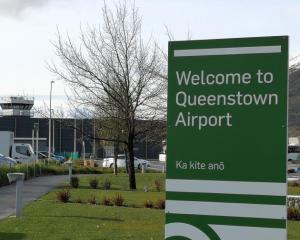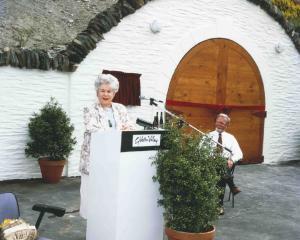
Hearing panel chairman David Allen, commissioner Ian Munro and Wanaka-based district councillor Lyal Cocks began the first week of submissions hearings on the proposal in Arrowtown yesterday.
The variation seeks to amend the proposed district plan by increasing heights and densities in residential and business zones close to the commercial centres in Queenstown, Arrowtown, Frankton and Wanaka to enable intensification of development.
It stems from a government mandate — policy 5 of the National Policy Statement for Urban Development — that urban centres have to zone for denser, more affordable housing.
Almost 40% of submissions received came from Arrowtown residents or ratepayers, many of whom were horrified at the possibility of 12m-high housing — 11m plus a pitched roof — in the historic village, which could apply to 266 medium density-zoned properties.
In a report to the panel, council resource management policy principal planner Amy Bowbyes recommended a rule be amended for that zone in Arrowtown, to enable a building height of 9m (8m plus a pitched roof), which was essentially two-storey development.
In the lower density suburban residential zone in Arrowtown, she recommended a height of 6.5m, and restricted discretionary building height band of 6.5m to 8m.
However, Mr Munro yesterday challenged the council’s lawyer, Sarah Scott, of Simpson Grierson, on that.
"I’ve had the, I’d say, pleasure of being invited to be a commissioner for nearly 40 years in this district, and it is just not the case that only Arrowtown has beautiful residential streets, one or two-storey houses, and has charming views of the [outstanding natural landscapes] behind them ... and extremely rich character and very high [amenity] values," he said.
"Why does nowhere else in this district’s urban zones get the same deferential balancing of this character and amenity if it’s a valid resource consent management way to apply policy5?
"The question is, if it’s good for one part of the district ... why would we not ask for the same approach to be used elsewhere, too?"
Ms Scott said there were "bespoke provisions" for other parts of the district, but from a legal perspective, Arrowtown’s special recommendation was in the operative district plan (ODP) and proposed district plan (PDP).
"Perhaps Arrowtown people have fought harder ... but the facts are, it’s in the PDP, it was in the ODP and it’s been recognised for some time."
She told the panel the district-wide variation amends the proposed plan by increasing heights and densities in some urban zones, and by amending provisions to recognise the benefits of intensification, to ensure adequate amenity values were provided for within intensification areas, and to ensure intensification can be serviced.
"It’s very hard to draw a line in the sand here, but it essentially requires almost a merits-based assessment of the changes requested — it is actually about ensuring that the greater densities can ... be realised."
Mr Munro questioned how that was not contradictory as it pertained to the discussion about Arrowtown.
"The purpose of this plan change is ... to investigate what the correct amenity values and intensification areas are [across the district].
"Surely that opens the ability of submitters to say the correct amenity values in [their] intensification area is to have less intensification?"
While Ms Scott said the council had treated such submissions as "out of scope", there was a pathway for the panel to respond to them.
The hearing continues.











